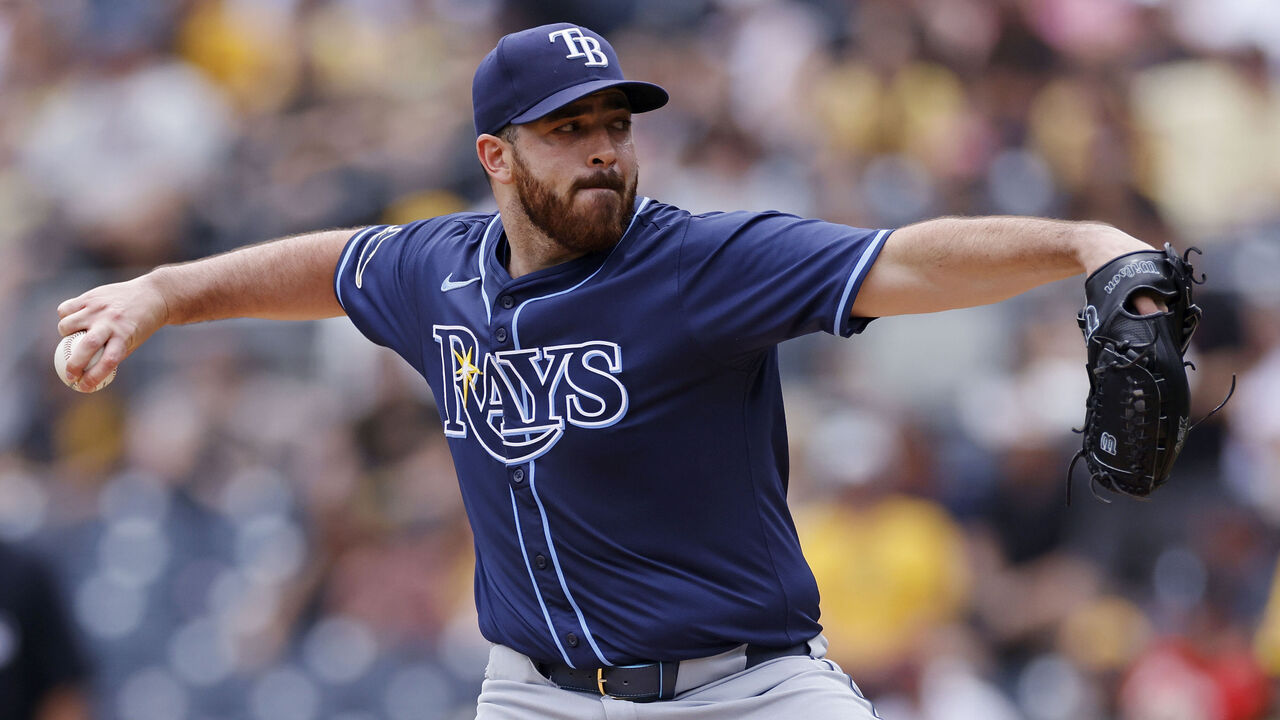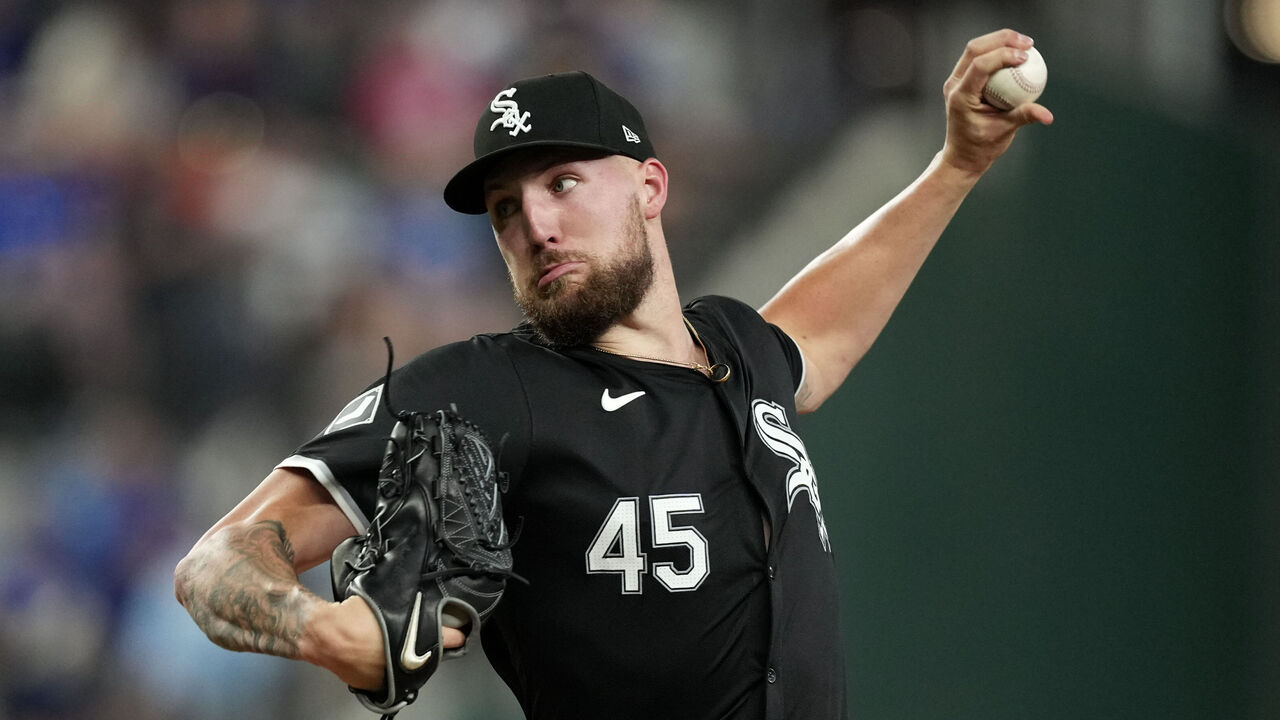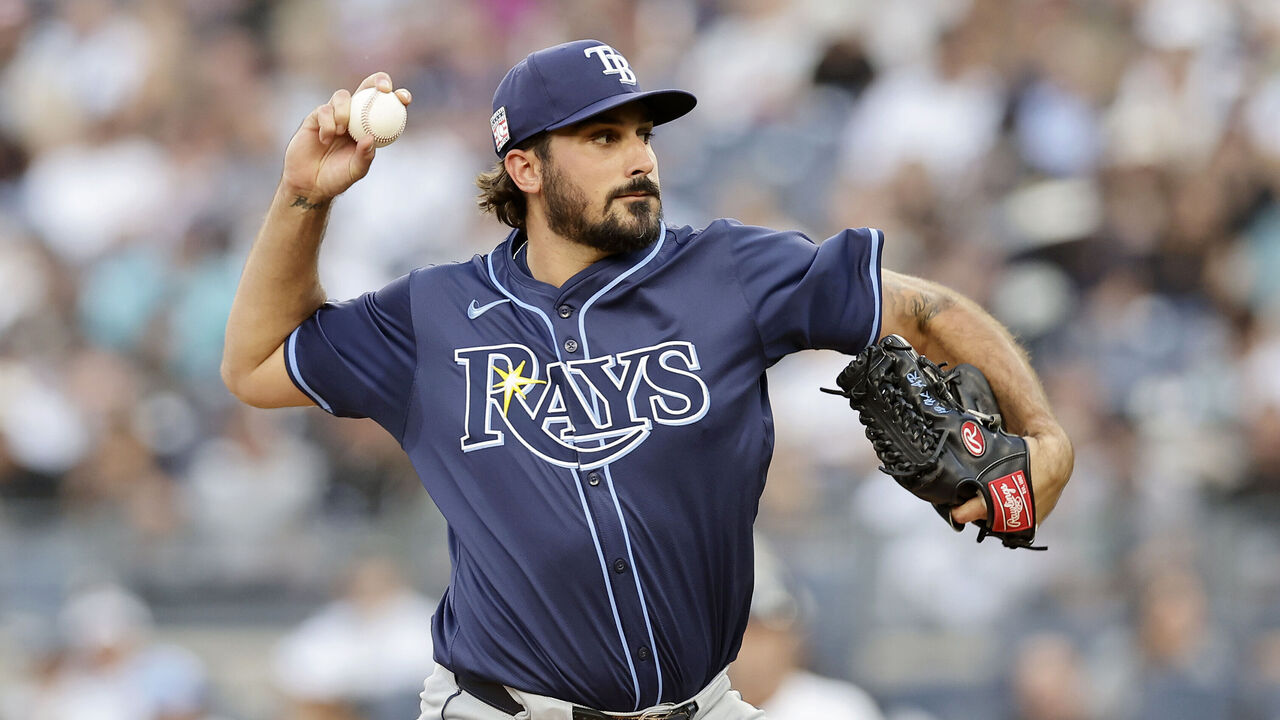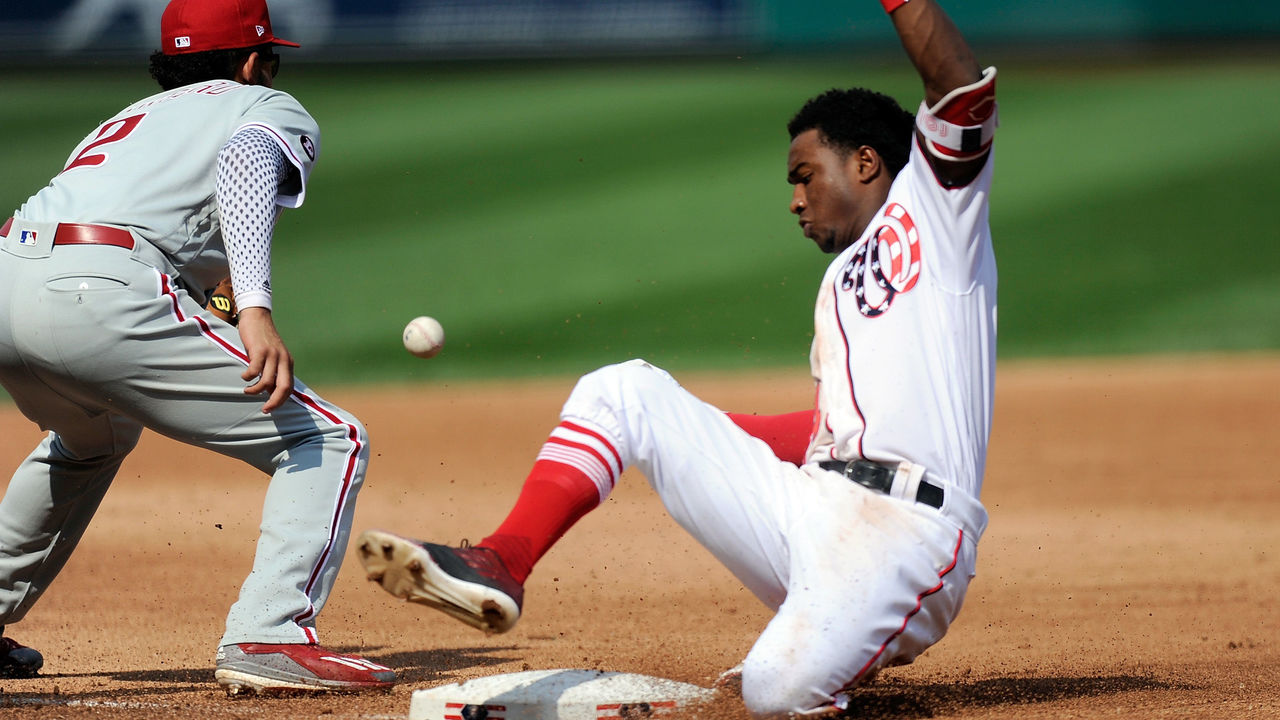The trade deadline's getting weird, Crochet the trailblazer, and 7 other observations
Starting Lineup is a biweekly collection of reporting, observations, and insights from the baseball beat, published every other week during the regular season.
Leading off …
The trade deadline's getting complicated.
The entire deadline period's become more muddled with fewer clear sellers and buyers ever since MLB added two more wild-card berths in 2022.
Consider this: During the first three years of the expanded playoff era, entering play on July 25 (about a week before the trade deadline), an average of 16.7 teams have enjoyed 25% or better postseason chances, according to FanGraphs.
In the previous format, using July 25 as our reference, the average was 13.7 teams. So, in the new format, three more teams on average can consider themselves to be in the race in midsummer.
But while there are now more contenders this time of year, there may also be more sellers. And while that seems paradoxical, that's what's playing out.
An unintended (or not) side effect of playoff expansion is more teams are electing to try and play both sides of the deadline trade market. Some fringe-level contenders aren't confident enough in their rosters to push chips into the center of the trade table and are testing the market on the selling side.
As many as eight teams may be willing to buy or sell, according to MLB.com insider Mark Feinsand.
"The most interesting thing is how many teams appear willing to both buy and sell," an NL executive told Feinsand. "That's not usually the case. Some teams may have to move money to add money, in addition to the fact that there are so many teams hovering around playoff contention."
The phenomenon of fringe contenders selling is already happening in advance of Tuesday's 6 p.m. deadline.

On Thursday night, the Rays sent outfielder Randy Arozarena to the Mariners for a prospect return. They traded starting pitcher Zach Eflin to the Orioles under 24 hours later.
The Rays are dismantling and that's fascinating because they were 52-51 at the time of the deals and not out of the race (19% playoff chances, per FanGraphs).
They actually started selling weeks earlier.
On July 3 , the Rays, then with a 21% chance at the playoffs, traded pitcher Aaron Civale - who somewhat represents the face of this more muddled period - to the Brewers.

Last year, the Guardians, with 28% postseason chances on July 31, traded Civale to the Rays.
Tampa Bay's likely acting rationally. Perhaps it took a lesson from last year when it gave up a top-100 prospect in Kyle Manzardo for Civale, who had limited club control.
This year, the Rays won't win the AL East, and are unlikely to even make the playoffs. Even if they earn a berth, they have a coin-flip's chance of advancing to the ALDS.
Trading for a prospect like Brody Hopkins, who owns elite velocity and a nasty breaking ball, from Seattle is a smart long-term bet.
All kinds of things to like about new Rays RHP Brody Hopkins (22). He's an athletic 6'4" and throws from a low release height with big extension.
— Rays Metrics (@RaysMetrics) July 26, 2024
Can touch 99 and has multiple wicked breaking ball shapes. Command will determine if he can start long term.
pic.twitter.com/VC7TjRq2X1
Whether the Rays got enough for Eflin can be debated, as the Orioles surrendered two top-20 prospects in Mac Horvath (No. 13 per Baseball America) and Jackson Baumeister (No. 18).
While there'll be differing opinions on the returns, the Rays are adding long-term pieces, and they're also operating from a position of strength - they have a surplus of pitching at a time when every contender needs pitching. They can also quickly try and contend again; they'll roll out a rotation of Taj Bradley, Ryan Pepiot, Shane Baz, Jeffrey Springs, and Shane McClanahan next season.
What we're witnessing in today's game: If a team owns 15-30% playoff chances at the deadline, it may very well be selling.
While there are more contenders than ever, it doesn't mean there are more buyers.
2. An incentive problem?
Teams acting rationally in selling as fringier contenders isn't necessarily great for the game.
After all, the trade deadline's traditionally a time of excitement for teams in the race - even if most of those deals are long-term losses.
Last deadline period, the Mariners were criticized by many in their fan base for trading closer Paul Sewald. They were a team on the fence at the time of the deal, at 55-51with 19% playoff chances.
After the Guardians traded Civale last year, club executives flew to meet the team in Houston to explain the unusual deal to a frustrated clubhouse.
The behavior of sort-of contenders selling does bring into question whether the incentives are aligned correctly with the game's overall interest.
If being four games out of a playoff berth with 60 games left is a position from which a team can sell, what the hell is the point of sending 40% of the league to the playoffs?
— Joe Sheehan (@joe_sheehan) July 23, 2024
Playoff expansion is mostly about TV money, but there was also the hope - at least among fans and players - that it'd lead to more competitive behavior. But that's not exactly happening.
Players are already dealing with a relatively cool free-agent market for non-stars during the winter, and now we're seeing a lack of interest in competing during the season.
Players should be careful about agreeing to further playoff expansion.
3. The Crochet conundrum
White Sox left-handed pitcher Garrett Crochet is enjoying a breakout season as one of the most dominant arms in baseball. He looks on paper like the deadline's No. 1 trade target given his quality and the poor state of the White Sox.
Considering the high injury rates among pitchers, it makes sense for a team like the Sox - many years away from contention - to sell high on an arm like Crochet.
But there's a catch; the Crochet situation's complicated.
To begin, Crochet's thrown 111 innings this season, well above his previous high of 54 in 2021. Crochet is a converted bullpen arm who had Tommy John surgery in 2022.

In an era when teams protect pitchers through innings limits and pitch counts, how much would a contender allow Crochet to throw this season?
Further, Crochet's also looking out for himself, in perhaps a trailblazing way: He's demanding that if he's traded, he'll only consent to pitch in October if awarded a contract extension. He's making $800,000 this year and isn't eligible to become a free agent until after the 2026 season.
Will more talented pitchers begin asking for guaranteed money to exceed certain innings limits? Top-end pitchers may have leverage.
4. The case for more intradivision commerce
I'm again hearing from rival executives that the White Sox won't trade Crochet within the AL Central due to club ownership's desire to not help divisional rivals.
Not only is this nonsensical because the White Sox are so far from contending, but as two executives pointed out, it's also self-defeating: An intradivisional trade today would weaken a division rival's outlook in the future, at a time when the White Sox hope to be contending.
There should be more in-division trades, not fewer. The Rays and Orioles showed us it's possible.
5. Another option off the table?
The top two difference-making arms thought to be available may not be going anywhere.
We went through Crochet's workload and contract concerns, and A's reliever Mason Miller is now on the IL with a fractured left pinky finger after he slammed his non-throwing fist into a table in frustration.
Now, injured players can still be traded, though it's rare. And perhaps this situation will be an exception since it's Miller's non-throwing hand that's hurt. Further, the A's should want to trade him.

As talented as Miller is, and as far away from free agency he is (he's cheap, in other words, for the frugal A's), he's a significant injury risk as one of the game's hardest throwers, with plenty of IL time already on his resume.
"I get that it doesn't feel good to move someone with (team) control," one executive told theScore, "but there's just too much risk to wait a couple years."
The A's should still be aggressively shopping Miller. Will they?
6. Teams that should be all-in
While there are several fringe contenders acting like sellers, there are still teams that ought to be aggressive buyers.
The following are teams with a greater than 30% chance but less than an 80% chance of securing a first-round playoff bye, per FanGraphs:
- Yankees
- Orioles
- Guardians
- Twins
Those four should be the most aggressive deadline buyers, and the Orioles began playing the part in acquiring Eflin.

7. Another way to add incentive
While teams would still rather earn a playoff bye than not have it - a bye offers a 100% advance rate to the division series - there's a belief the rust factor is real.
The Braves' last regular-season game last year was Oct. 1. Their first playoff game: Oct. 7.
"We thought we did everything possible during the delay. Recreated things the best we could," Braves manager Brian Snitker said after losing the NLDS.
A small sample, but it didn't work.
While playoff contraction is unlikely (has a playoff format ever shrunk?), MLB can do something to increase incentives for top contenders.
I've proposed this before and will continue to do so until it's willed into existence: MLB ought to adopt the "ghost win" wild-card format used in Korea. The MLBPA's on board. In that format, the top wild card needs to win only once in its series to advance, while the lesser seed must win twice. It could even be played as a doubleheader.
This format would shave multiple days between rounds, and would also incentivize being the better wild-card team - helping the trade-deadline market become more robust. More deadline excitement is good for MLB.
8. The other power outage
Run scoring's down and several teams need more power and more bats this deadline period.
While we know batting averages are depressed and fewer home runs are flying out of ballparks compared with recent years, there's another concerning area of offensive performance: doubles are becoming endangered.
Hitters are on a pace to hit 7,761 doubles this year (1.6 per game), which would be the lowest total since MLB expanded to 30 teams. And it's not simply a matter of elevated strikeout rates and thus fewer balls in play, as the league-wide strikeout rate is down a tick to 22.3% compared to the full-season high of 23.1% in 2021.
What's going on? Pirates hitting coach Andy Haines told theScore that outfielders are playing deeper and deeper, something of MLB's version of Cover 2 defense.
And by keeping more hits as singles, it's more challenging to string hits together to score runs. Scoring's down to 4.38 runs per game from 4.62 last season.

Since 2020, the average depth of a major-league center fielder sat between either 323 or 324 feet. It's 323 feet this year. That's up from 312 feet in the first year of Statcast tracking in 2015. The story's the same for left and right fielders. Outfielders are playing deeper than ever and willing to sacrifice bloop hits to play no-doubles defense all game long.
9. Bonus blues
I understand why teams game the draft bonus-pool system. I also understand why players - mostly college seniors - agree to paltry draft bonuses for a chance to chase their dreams. But that so many top prospects drafted in the first 10 rounds sign bonuses for $10,000 or less still doesn't sit right.
These are the best amateur players in the country and they often sign for hundreds of thousands of dollars less than the bonus recommendation for their draft spot. They're settling for value equal to that of a used Honda Civic to chase an unlikely chance of advancing to the majors, while making improved but still poor salaries in the minors.
Preying on such dreams doesn't seem right. Baseball would be better served by having draft order and results be more merit based, and by keeping bonuses closer to that of their actual recommended values - or not having a bonus pool at all.
Travis Sawchik is theScore's senior baseball writer.